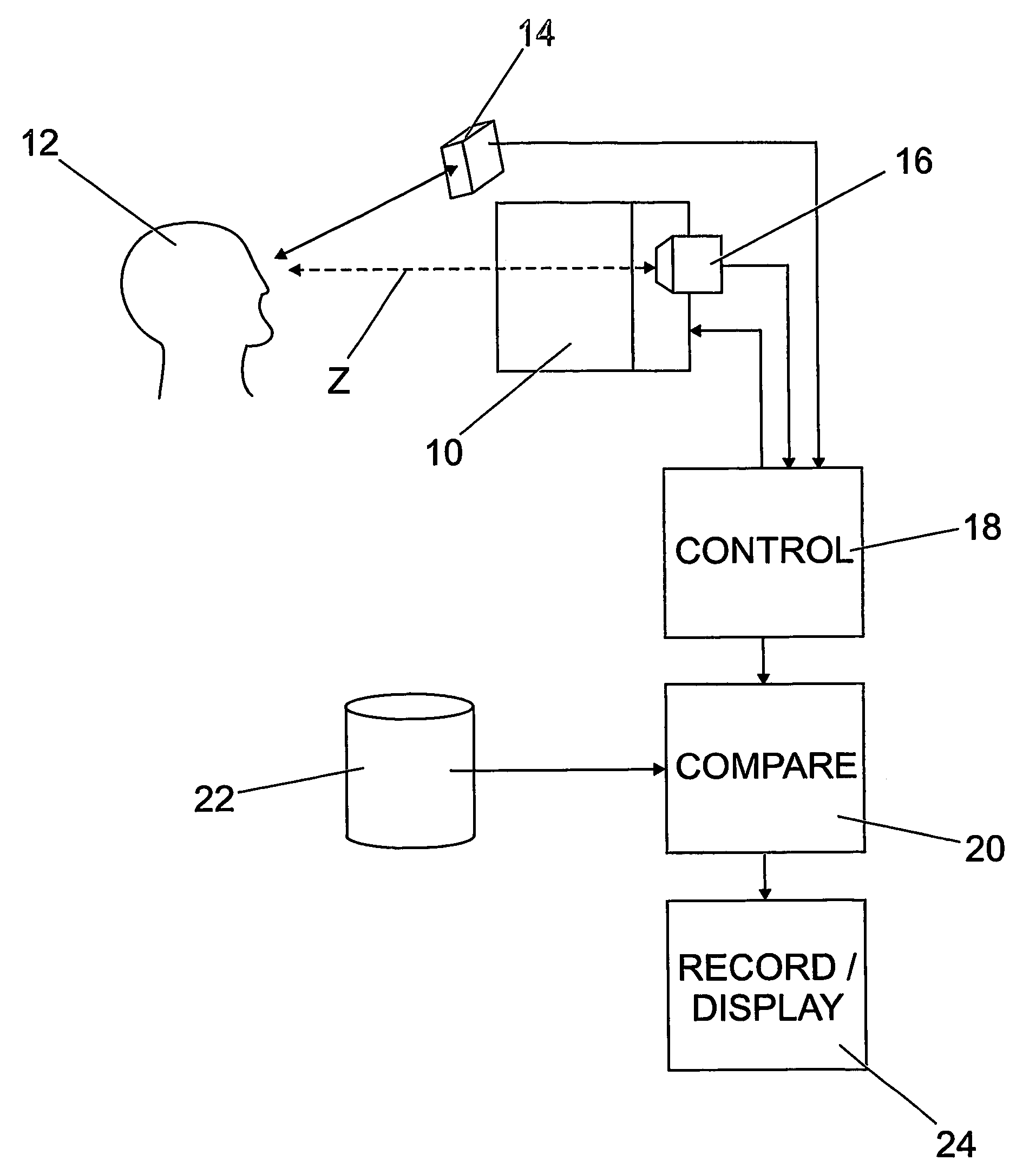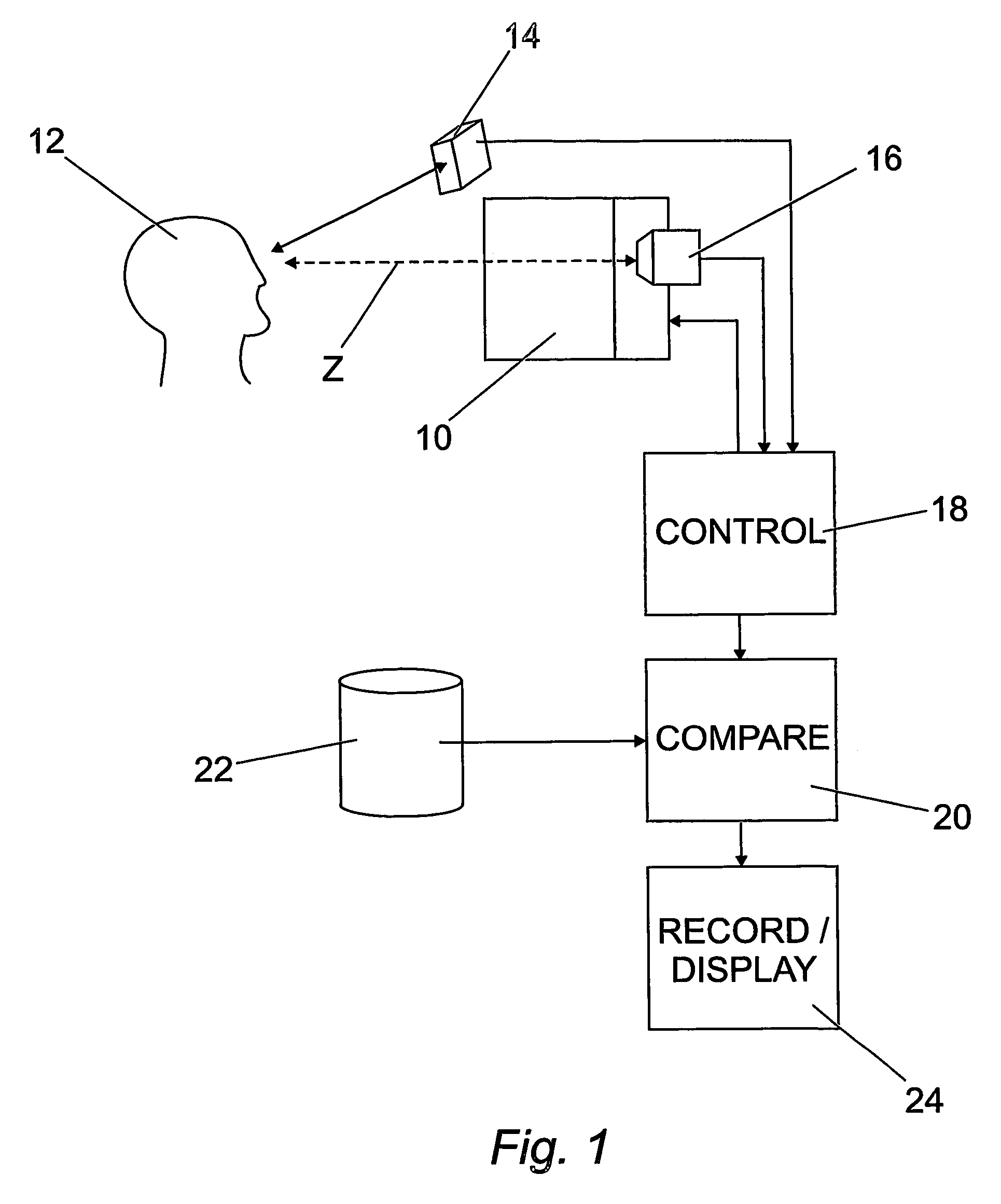Method and apparatus for the diagnosis of glaucoma and other visual disorders
a technology for visual disorders and glaucoma, applied in the field of glaucoma and other visual disorders, can solve the problems of slow progression of the disease at typically 1.8% of the field of view per annum, low resolution and inaccurateness, and limiting utility, so as to achieve the effect of detecting the disease in several years, and reducing the number of patients
- Summary
- Abstract
- Description
- Claims
- Application Information
AI Technical Summary
Benefits of technology
Problems solved by technology
Method used
Image
Examples
Embodiment Construction
[0016]Embodiments of the invention will be described, by way of example only, with reference to the accompanying drawings, in which:
[0017]FIG. 1 is a schematic illustration of one apparatus embodying the invention; and
[0018]FIGS. 2 and 3 represent images used in one method according to the invention.
[0019]Prior to this invention visual field analysis methods and apparatus have been extremely crude, in general consisting of an array of lights or other display illuminated under a pseudo-random protocol and at varying brightness straddling the expected threshold of the retina and a fixation point to attempt to maintain some minimal knowledge of the eyes position prior to stimulus. Unfortunately the human vision system is particularly poor at maintaining a constant fixation and furthermore even if this is achieved with practice there are side effects to concentration on a fixation point that significantly reduce the accuracy of the measurement. As a consequence most of these machines ar...
PUM
 Login to View More
Login to View More Abstract
Description
Claims
Application Information
 Login to View More
Login to View More - R&D
- Intellectual Property
- Life Sciences
- Materials
- Tech Scout
- Unparalleled Data Quality
- Higher Quality Content
- 60% Fewer Hallucinations
Browse by: Latest US Patents, China's latest patents, Technical Efficacy Thesaurus, Application Domain, Technology Topic, Popular Technical Reports.
© 2025 PatSnap. All rights reserved.Legal|Privacy policy|Modern Slavery Act Transparency Statement|Sitemap|About US| Contact US: help@patsnap.com



